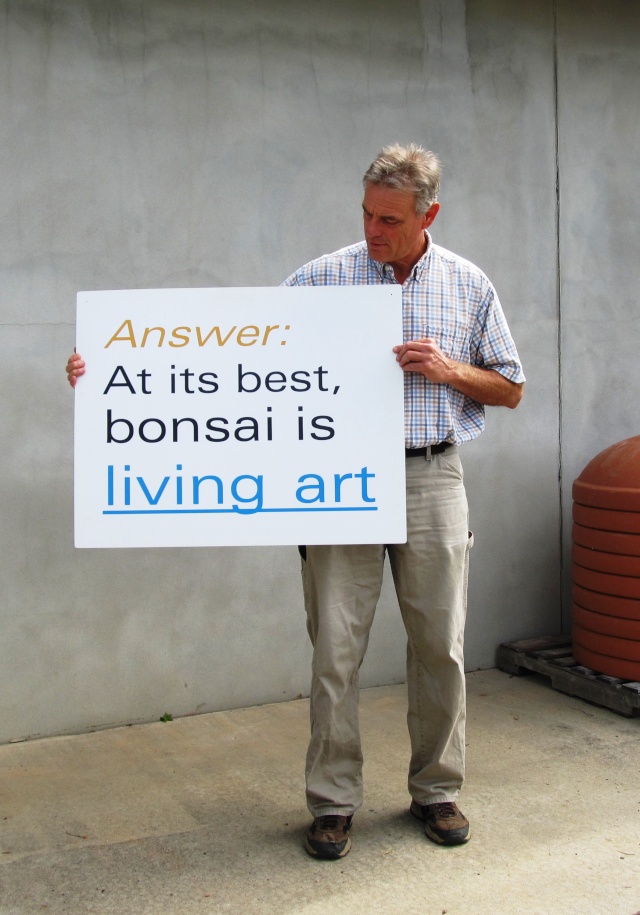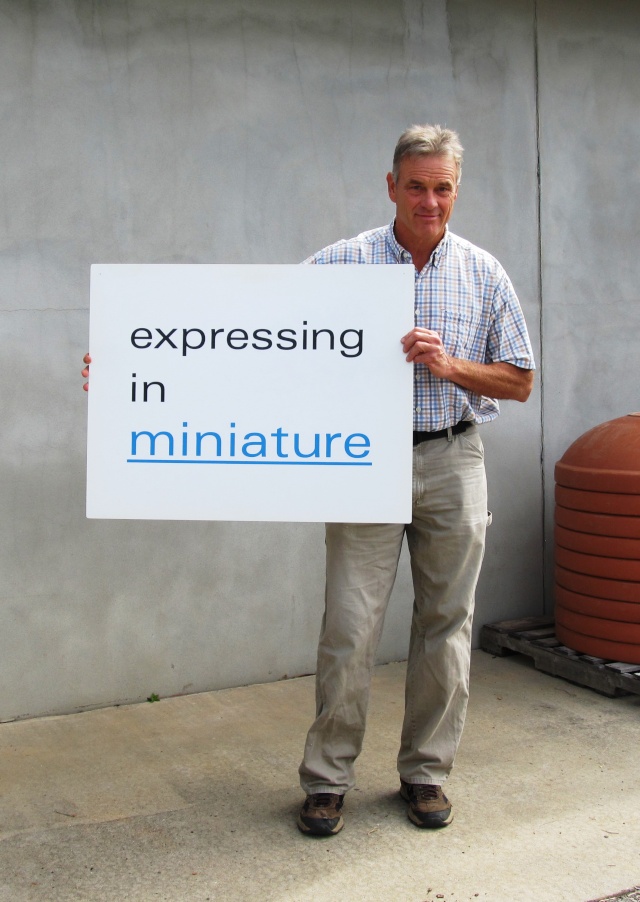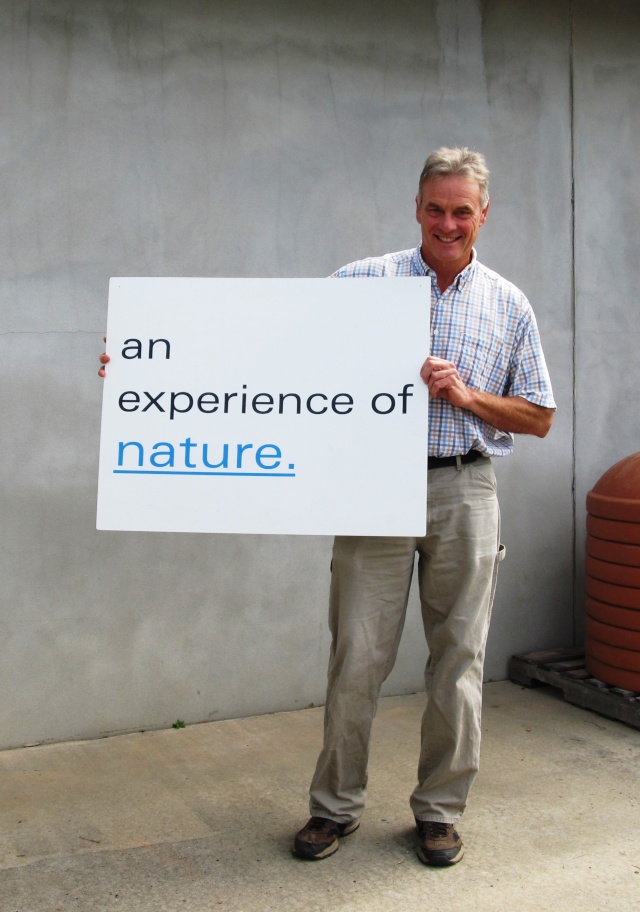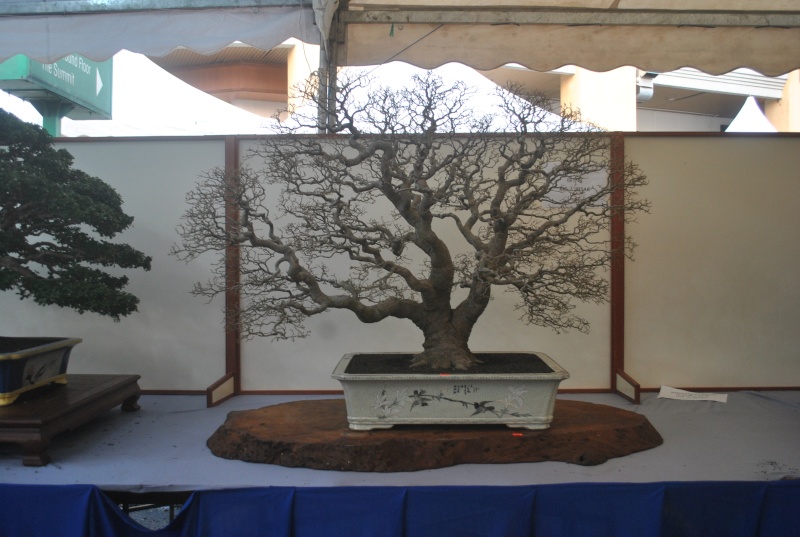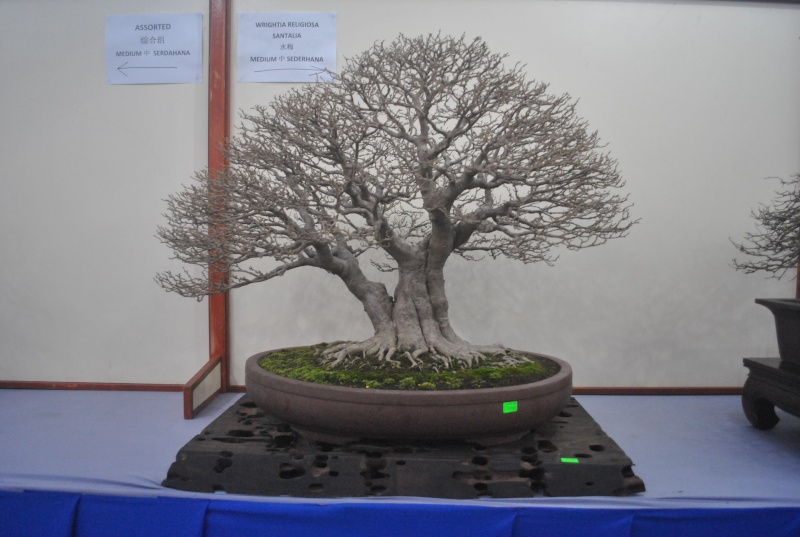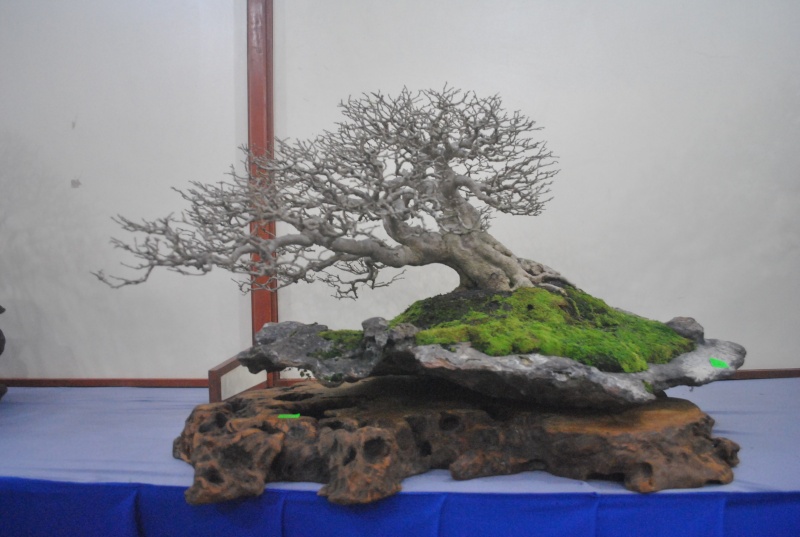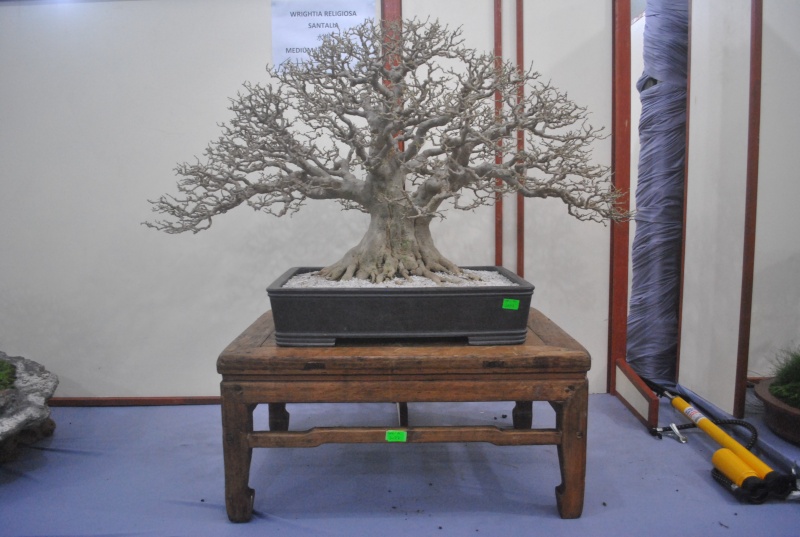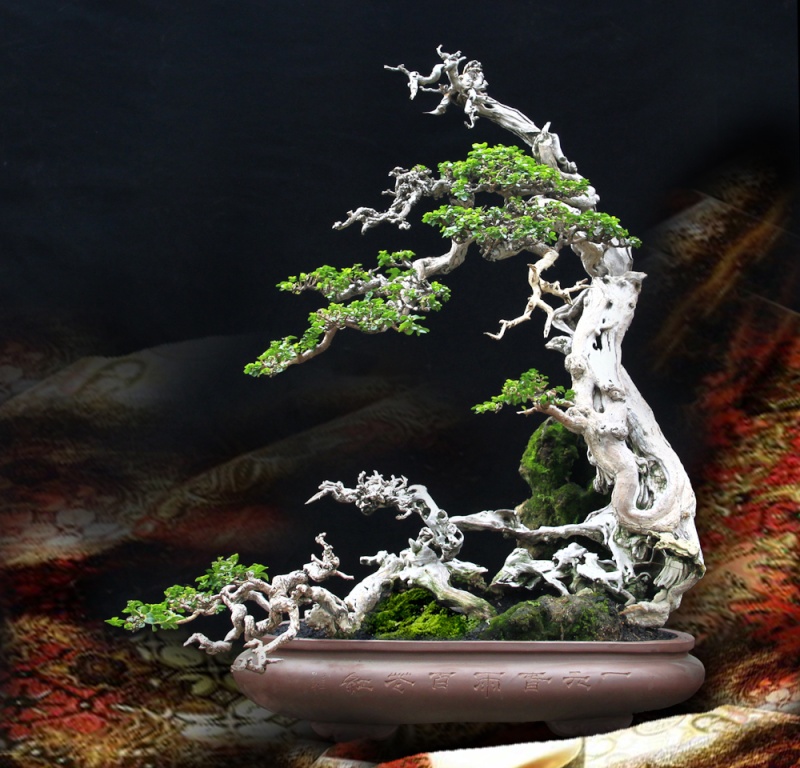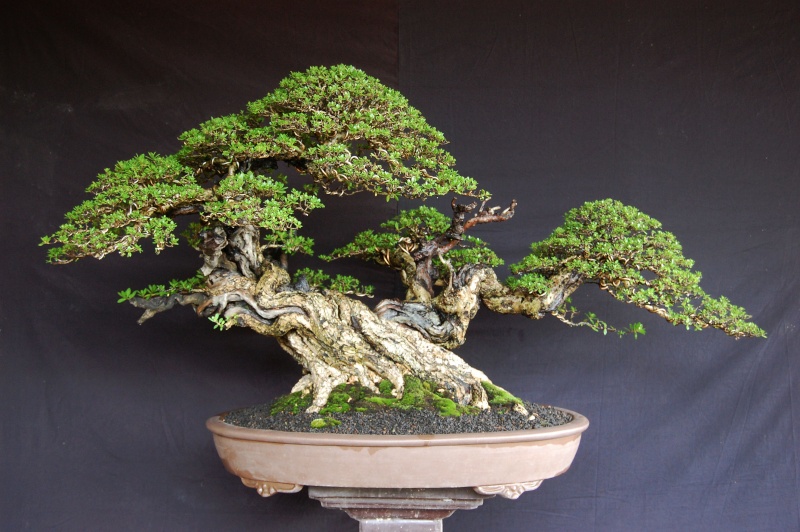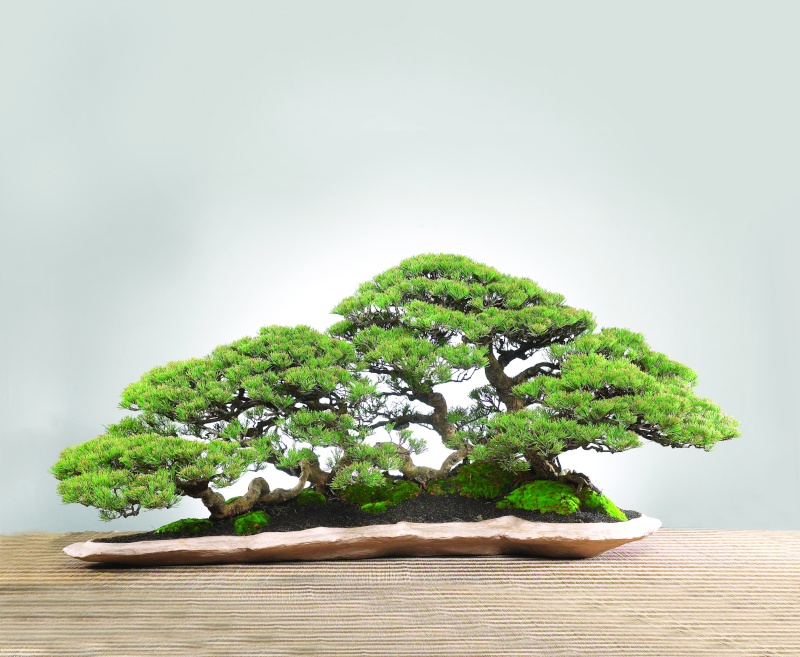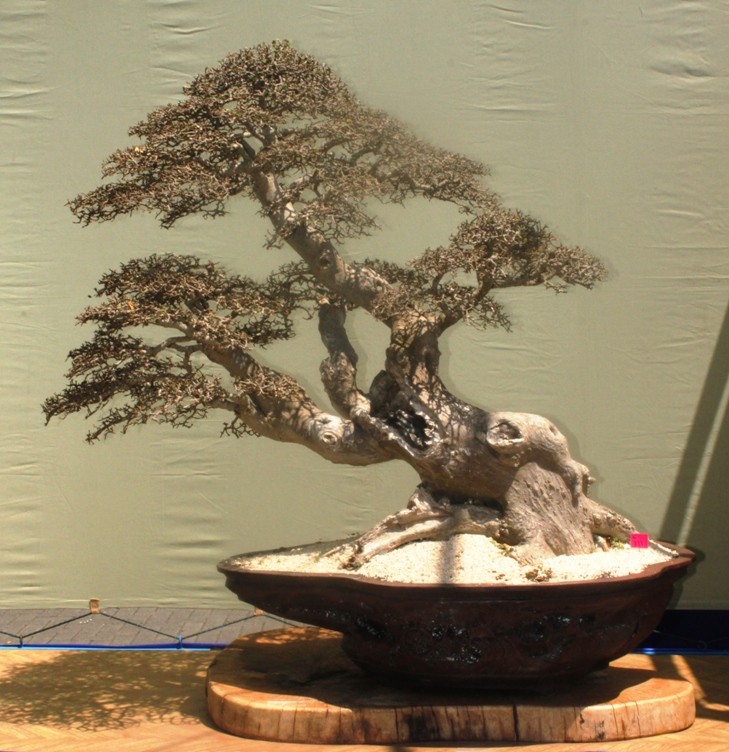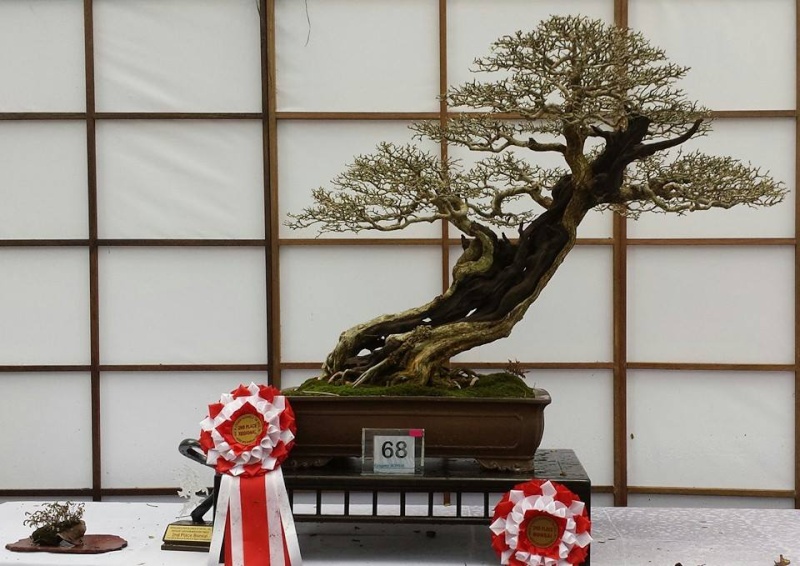American Bonsai at the NC Arboretum
+95
kingsnake
Tom
MKBonsai
BrianS
manumidam
Chris Cochrane
Intricate Simplicity
chench53
KyleT
Maros Belan
DjTommy
Bolero
Gonetopot
Rick36
M. Frary
Van
Toshiro
fiona
Precarious
drbuzzbee
geo
LanceMac10
MichaelS
kimo
Chellis
Leo Schordje
FrankP999
dick benbow
BrianG
crust
TN Jim
Seth Ellwood
Wander
peterkang
Judgie
Kevin S - Wisco Bonsai
Vance Wood
JMcCoy
brett2013
GerhardGerber
lordy
Eric Group
my nellie
steveb
Jaybird
Todd Ellis
jgeanangel
Daygan
AlainK
Richard S
Randy_Davis
Robert J. Baran
David Brunner
William N. Valavanis
Jkd2572
Dale Cochoy
Jesse McMahon
prestontolbert
yamasuri
bingregory
Stephen Krall
DougB
Ashiod
JADunnagan
sayotefries
JudyB
Dan W.
Khaimraj Seepersad
DuncanJH
Dave Murphy
monte
MikeG
augustine
Russell Coker
Kev Bailey
lennard
BigDave
Marty Weiser
Smithy
coh
tmmason10
dorothy7774
gman
Dave Leppo
hometeamrocker
bwaynef
Billy M. Rhodes
Walter Pall
Sam Ogranaja
JimLewis
MartinSweeney
bonsaisr
Auballagh
John Quinn
Arthur Joura
99 posters
Page 22 of 40
Page 22 of 40 •  1 ... 12 ... 21, 22, 23 ... 31 ... 40
1 ... 12 ... 21, 22, 23 ... 31 ... 40 
 Re: American Bonsai at the NC Arboretum
Re: American Bonsai at the NC Arboretum
I've been away from this forum for a while but on my return I was pleased to see that Arthur was still posting informative and thought provoking articles in this thread and that they continue to elicit a spirited debate. That this debate has also persuaded Walter to contribute is an added bonus. I'm sure most of us are extremely grateful for these contributions, I know I am, so thank you gents!
Of course the only problem is that in this company it can feel a little intimidating for an ignorant, uneducated hobbyist like myself to contribute but as this thread has caused me to give the subject of art & bonsai some considerable thought I suppose that for what it is worth I might as well share my thoughts. Whether they're of any value to the wider debate is for you to decide .
.
Anyway, it seems to me that the ultimate objective of all art is to express something of the emotional relationship between the artist and their subject. But what, in bonsai terms, is the subject?
The obvious and intuitive answer of course is trees, which to some extent I suppose must be true but I think that for most of us it goes a little deeper than that.
I would argue that the tree is in fact the medium not the subject! The subject is in fact nature or perhaps even man's relationship with nature. Of course as a subject for art this is not new, original or in any way exclusive to bonsai but I digress.
If the objective of art is to express an emotional response to some aspect of human experience then it follows that the only way to judge the success or failure of the artistic endeavour is to ask whether the finished work succeeds in evoking or provoking an equivalent emotional response in the audience.
Of course such a judgement is problematic because it is highly subjective and dependent on many variables, not least the audiences experience and expectations. This is why two people can have a wildly different response to a single piece of work. Or indeed why the same person (Arthur for example) can have a radically different response to essentially the same work (Dan Robinson's bonsai) but viewed years later. The nature and character of the work may not have changed but Arthurs experience and expectations obviously have.
The "urinal" is a good example of this subjectivity. I "don't get it" by which of course I mean "I don't understand it". I don't hate it and I don't have any problem accepting that it is (or at least could be) art but I have no emotional response to it at all. It leaves me cold but then again perhaps that's not surprising. I expect that it was very definitely aimed at a narrow and specific audience (the art establishment of the time) not the general public. I'm also fairly sure that the urinal was the medium NOT the subject. And I don't suppose the subject was "plumbing" or "the state of public conveniences in late 19th C Europe" or whatever.
Anyway, to bring it back to bonsai, the point I am trying to make is that if the tree is the medium NOT the subject then the actual form or style of the tree in question (classical, neo-classical, modern, abstract, grotesque, fairy tale or naturalistic etc) is of little importance. What matters is that it succeeds in communicating the emotional message to the audience that the artist intended (or at least that it elicits a positive emotional response, I guess the audience can never really be sure whether they are seeing what the artist intended them to see or not).
This doesn't mean that all works are equal, some are still objectively "better" than others but simply that the worth or value of a piece can't in anyway be determined solely by it's form or style. To say that one form or style is good and another bad or that one is right and another wrong is therefore nonsense!
Unless of course, my assumption that the "subject" of ALL bonsai artist is Nature is incorrect?
Suppose I'm wrong and in fact the subject for some artists/audiences really is Trees? In this case an argument can be made that the Naturalistic style being more literal is better (although literal interpretations aren't always more emotionally powerful than abstract ones hopefully you see my point).
Then again, perhaps for some the subject isn't Nature or Trees? Perhaps it's Orientalism or Japanese art & culture? In this case even the most magnificent naturalistic bonsai will "fail" to provoke the correct emotional response because Japanese-ness is the overriding artistic requirement and as Walter has often pointed out, the most common natural tree style, the informal broom doesn't appear in the Japanese bonsai rule book.
Anyhow, I'm exceeding my station thinking about these lofty subjects (especially in this company) so I'll close simply by saying that for me at least the tree is the medium not the subject and the subject is Nature. So, the arguments about the relative merits of different styles and forms is of little consequence to my enjoyment of other peoples work and is of only limited relevance to my own ham fisted attempts to produce something that says what I want to say about my experience of the natural world.
Of course the only problem is that in this company it can feel a little intimidating for an ignorant, uneducated hobbyist like myself to contribute but as this thread has caused me to give the subject of art & bonsai some considerable thought I suppose that for what it is worth I might as well share my thoughts. Whether they're of any value to the wider debate is for you to decide
Anyway, it seems to me that the ultimate objective of all art is to express something of the emotional relationship between the artist and their subject. But what, in bonsai terms, is the subject?
The obvious and intuitive answer of course is trees, which to some extent I suppose must be true but I think that for most of us it goes a little deeper than that.
I would argue that the tree is in fact the medium not the subject! The subject is in fact nature or perhaps even man's relationship with nature. Of course as a subject for art this is not new, original or in any way exclusive to bonsai but I digress.
If the objective of art is to express an emotional response to some aspect of human experience then it follows that the only way to judge the success or failure of the artistic endeavour is to ask whether the finished work succeeds in evoking or provoking an equivalent emotional response in the audience.
Of course such a judgement is problematic because it is highly subjective and dependent on many variables, not least the audiences experience and expectations. This is why two people can have a wildly different response to a single piece of work. Or indeed why the same person (Arthur for example) can have a radically different response to essentially the same work (Dan Robinson's bonsai) but viewed years later. The nature and character of the work may not have changed but Arthurs experience and expectations obviously have.
The "urinal" is a good example of this subjectivity. I "don't get it" by which of course I mean "I don't understand it". I don't hate it and I don't have any problem accepting that it is (or at least could be) art but I have no emotional response to it at all. It leaves me cold but then again perhaps that's not surprising. I expect that it was very definitely aimed at a narrow and specific audience (the art establishment of the time) not the general public. I'm also fairly sure that the urinal was the medium NOT the subject. And I don't suppose the subject was "plumbing" or "the state of public conveniences in late 19th C Europe" or whatever.
Anyway, to bring it back to bonsai, the point I am trying to make is that if the tree is the medium NOT the subject then the actual form or style of the tree in question (classical, neo-classical, modern, abstract, grotesque, fairy tale or naturalistic etc) is of little importance. What matters is that it succeeds in communicating the emotional message to the audience that the artist intended (or at least that it elicits a positive emotional response, I guess the audience can never really be sure whether they are seeing what the artist intended them to see or not).
This doesn't mean that all works are equal, some are still objectively "better" than others but simply that the worth or value of a piece can't in anyway be determined solely by it's form or style. To say that one form or style is good and another bad or that one is right and another wrong is therefore nonsense!
Unless of course, my assumption that the "subject" of ALL bonsai artist is Nature is incorrect?
Suppose I'm wrong and in fact the subject for some artists/audiences really is Trees? In this case an argument can be made that the Naturalistic style being more literal is better (although literal interpretations aren't always more emotionally powerful than abstract ones hopefully you see my point).
Then again, perhaps for some the subject isn't Nature or Trees? Perhaps it's Orientalism or Japanese art & culture? In this case even the most magnificent naturalistic bonsai will "fail" to provoke the correct emotional response because Japanese-ness is the overriding artistic requirement and as Walter has often pointed out, the most common natural tree style, the informal broom doesn't appear in the Japanese bonsai rule book.
Anyhow, I'm exceeding my station thinking about these lofty subjects (especially in this company) so I'll close simply by saying that for me at least the tree is the medium not the subject and the subject is Nature. So, the arguments about the relative merits of different styles and forms is of little consequence to my enjoyment of other peoples work and is of only limited relevance to my own ham fisted attempts to produce something that says what I want to say about my experience of the natural world.
Last edited by Richard S on Sun Sep 06, 2015 11:17 am; edited 1 time in total

Richard S- Member
 Re: American Bonsai at the NC Arboretum
Re: American Bonsai at the NC Arboretum
Richard S wrote:
Of course the only problem is that in this company it can feel a little intimidating for an ignorant, uneducated hobbyist like myself to contribute but as this thread has caused me to give the subject of art & bonsai some considerable thought I suppose that for what it is worth I might as well share my thoughts. Whether they're of any value to the wider debate is for you to decide.
For an ignorant, uneducated hobbyist you gave a profound great answer. I really like what you are writing. It adds a lot of insight to the discussion.
Thank you, Richard.
Last edited by Walter Pall on Sun Sep 06, 2015 11:55 am; edited 1 time in total

Walter Pall- Member
 Re: American Bonsai at the NC Arboretum
Re: American Bonsai at the NC Arboretum
Thank you Walter, that is appreciated.
Regards
Richard
Regards
Richard

Richard S- Member
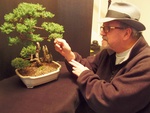
Bolero- Member
 Re: American Bonsai at the NC Arboretum
Re: American Bonsai at the NC Arboretum
And artist shouldnt have to care wether it exist in nature or not,
He just tries to make something beautifull, he is not bound by rules
Personally i do not care at all what the style is called, i have read a lot about them but if i look at a tree i never think, does this really exist in nature or not, do the rules apply do thos tree..i do not care.
Only 1 thing matters, does it look good or not,
So, does that make bonsai art? Its no different from painting. Both are crafts . In the hands of an artist is when they can become art.
A while ago o was in this demo performed by an old guy doing satsuki bonsai for about 40 years. You. Can bet he knew what he was doing, Was he an artist? Hell no and he knew it too. If you had to give him a name it would be "farmer" and a pretty good one too.
Its also about the setting, how it is displayed, i once went to an ehibition and it was in a japanese castle,
The bonsai displayed were offcourse traditional, though top class ones, it was a perfect match, it was like every part in the different rooms (tatami, furniture, bonsai,..) enhances each other. It creates a special atmosphere hard to describe, a feeling of perfectionism almost, it makes you give respect to the rules(i dont mean bonsai rules) but also cery calming.
In a similar atmosphere would a tree in the fairy style work?, not to the same extent i believe
trees that look like reall trees is what i like most though, wether this is styled in traditional way or naturalistic way doesnt matter. Yes i do think both ways can create this.
Tommy
He just tries to make something beautifull, he is not bound by rules
Personally i do not care at all what the style is called, i have read a lot about them but if i look at a tree i never think, does this really exist in nature or not, do the rules apply do thos tree..i do not care.
Only 1 thing matters, does it look good or not,
So, does that make bonsai art? Its no different from painting. Both are crafts . In the hands of an artist is when they can become art.
A while ago o was in this demo performed by an old guy doing satsuki bonsai for about 40 years. You. Can bet he knew what he was doing, Was he an artist? Hell no and he knew it too. If you had to give him a name it would be "farmer" and a pretty good one too.
Its also about the setting, how it is displayed, i once went to an ehibition and it was in a japanese castle,
The bonsai displayed were offcourse traditional, though top class ones, it was a perfect match, it was like every part in the different rooms (tatami, furniture, bonsai,..) enhances each other. It creates a special atmosphere hard to describe, a feeling of perfectionism almost, it makes you give respect to the rules(i dont mean bonsai rules) but also cery calming.
In a similar atmosphere would a tree in the fairy style work?, not to the same extent i believe
trees that look like reall trees is what i like most though, wether this is styled in traditional way or naturalistic way doesnt matter. Yes i do think both ways can create this.
Tommy
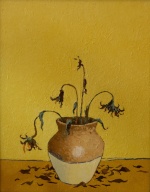
DjTommy- Member
 Re: American Bonsai at the NC Arboretum
Re: American Bonsai at the NC Arboretum
[quote="Walter Pall"]
The fact that many western bonsai practitioners practice as a ''craft'' (that is that they may just follow a set of rigid instructions from a book or a teacher without thinking or questioning) does not mean that bonsai is practiced as a craft in Japan. It simply means that they do not possess (or have not yet aquired) an aesthetic sensibility, OR that they have failed to understand the eastern concept. The Japanese idea of bonsai (at least the traditional concept) has been given extremely profound contemplation and discussion and dissagreement (MUCH more than in the west) by many scholars and philosiphers starting with the Chinese.
The original (and ongoing) eastern (and especially Japanese) concept of bonsai was to create a work which deeply moves the viewer in such a way as to convey a sense of the wild and the natural, exactly what the ''new'' western idea of the ''naturalistic'' style seeks to achieve. The argument, eastern AND western, is about how to achieve it. That many attemps (both western and eastern) to do this fail, has nothing to do with western verses eastern concepts of art. It has everything to do with individual artistic ability.
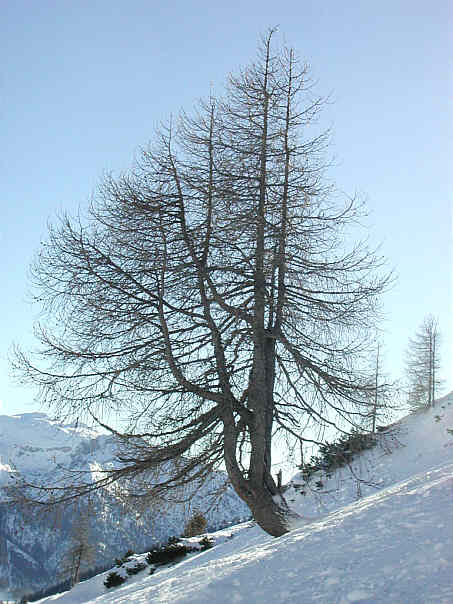
It's very simple. If you condense the exact image of this tree to the size of a bonsai, it would look like a shrub in a pot not a 20 metre tree. The kind of thing you would buy at a nursery to plant in your garden.
I suspect that when someone like Rainer Goebel say ''because it does not look like a bonsai'' What they mean is ''it will not give you a satifactory impression of a tree when it is in a bonsai pot.
It's not like that at all. It is a question of perception. A two dimentional painting of a lady can still be percieved by us as a full sized figure in our minds because we are ''looking into'' a scene. Usually you have a reference for size - a room, a chair in the picture. The same with a painting of the Larch. It would also look like a full sized tree...even if the painting was just 3cm. Looking at the same image as a 3 dimentional bonsai, we can no longer ''look into a scene'' we have nothing for size reference and we need to construct the scene in our minds. That's why we need to use all the bonsai ''tricks'' to make the illusion. And that is a very important point which many people don't understand. BONSAI IS AN ILLUSION.... NOT THE REAL THING. And that is why we need to manipulate, alter, change and refine from the natural to get the same feeling. The problem, (and I completely agree with you on this point) is that it is extremely difficult to achieve a ''naturalistic'' and a convincing image.
There is no ''classical'' school. Everybody wants to achieve the same thing.....the image of a tree..Not many succeed. Why? Well one of the reasons is as you say because they just follow the basic rules again and again without thinking about what the REAL objective is: (to create a believable image of a tree) and more people just copy what they do. Another reason could be that they do not have the sensibility to observe and interperate what they see in nature. The ''new wave'' is simply the westerners who are just starting to claim that they question what they are doing. It is very important to question. We need it to develop, but it's something that the Japanese have already done. (and are still doing) The fact that many of them fail has nothing to do with new concepts or theories. The concept is already there and it is extremely simple. The discussion should be 'how do we use the concept? ''What is the best way to achieve it?''
Nobody hates it. How can you hate a desire to recreate the natural in bonsai? What they dislike are many of the attemps made so far and even worse, when some of those examples are held to be masterpeices.
I think they don't question what they are doing. They are doing it as a craft. While nowadays most will agree that bonsai is an art form they don't practice it like one. (btw, fifteen years ago many if not the majority were of the opinion that bonsai was NOT an art form). So what is the difference? In a nutshell the craftsman has learned what he is doing and just does it. He does not question it, it's not his job to innovate, but to produce. The artist questions what he does, he questions everything. If something was not done before that's a good reason to do it. This is the western understanding of art by and large. The eastern art concept is more as we see craft.
The fact that many western bonsai practitioners practice as a ''craft'' (that is that they may just follow a set of rigid instructions from a book or a teacher without thinking or questioning) does not mean that bonsai is practiced as a craft in Japan. It simply means that they do not possess (or have not yet aquired) an aesthetic sensibility, OR that they have failed to understand the eastern concept. The Japanese idea of bonsai (at least the traditional concept) has been given extremely profound contemplation and discussion and dissagreement (MUCH more than in the west) by many scholars and philosiphers starting with the Chinese.
The original (and ongoing) eastern (and especially Japanese) concept of bonsai was to create a work which deeply moves the viewer in such a way as to convey a sense of the wild and the natural, exactly what the ''new'' western idea of the ''naturalistic'' style seeks to achieve. The argument, eastern AND western, is about how to achieve it. That many attemps (both western and eastern) to do this fail, has nothing to do with western verses eastern concepts of art. It has everything to do with individual artistic ability.

BECAUSE IT DOES NOT LOOK LIKE A BONSAI. What a monstrous statement! I was tempted to answer right away, but fortunately did not. I went skiing instead. On the lift I thought a lot about this. How could it be that a reasonable person in general who has seen a university from inside would say this? How was it possible that practically everybody felt that the tree was great - and most could not see it as example for bonsai?
It's very simple. If you condense the exact image of this tree to the size of a bonsai, it would look like a shrub in a pot not a 20 metre tree. The kind of thing you would buy at a nursery to plant in your garden.
I suspect that when someone like Rainer Goebel say ''because it does not look like a bonsai'' What they mean is ''it will not give you a satifactory impression of a tree when it is in a bonsai pot.
It's like having a good looking lady sitting on a chair in front of you and everybody agrees that she is good looking. I ask 'can we not paint her?' and the answer is 'You cannot paint her, she does not look like a painting'. You would be offered treatment for such a statement.
It's not like that at all. It is a question of perception. A two dimentional painting of a lady can still be percieved by us as a full sized figure in our minds because we are ''looking into'' a scene. Usually you have a reference for size - a room, a chair in the picture. The same with a painting of the Larch. It would also look like a full sized tree...even if the painting was just 3cm. Looking at the same image as a 3 dimentional bonsai, we can no longer ''look into a scene'' we have nothing for size reference and we need to construct the scene in our minds. That's why we need to use all the bonsai ''tricks'' to make the illusion. And that is a very important point which many people don't understand. BONSAI IS AN ILLUSION.... NOT THE REAL THING. And that is why we need to manipulate, alter, change and refine from the natural to get the same feeling. The problem, (and I completely agree with you on this point) is that it is extremely difficult to achieve a ''naturalistic'' and a convincing image.
The classical school believes that they are showing the trees like they are while they only show them in a mostly stereotype way as they THINK they are, as they were taught to see them. And the new wave shows the trees as they really are and still meet a lot of opposition for their blasphemy.
There is no ''classical'' school. Everybody wants to achieve the same thing.....the image of a tree..Not many succeed. Why? Well one of the reasons is as you say because they just follow the basic rules again and again without thinking about what the REAL objective is: (to create a believable image of a tree) and more people just copy what they do. Another reason could be that they do not have the sensibility to observe and interperate what they see in nature. The ''new wave'' is simply the westerners who are just starting to claim that they question what they are doing. It is very important to question. We need it to develop, but it's something that the Japanese have already done. (and are still doing) The fact that many of them fail has nothing to do with new concepts or theories. The concept is already there and it is extremely simple. The discussion should be 'how do we use the concept? ''What is the best way to achieve it?''
Anyway, it is very important at this point to repeat that it is not necessary to like the naturalistic way. You can hate it, that's OK.
Nobody hates it. How can you hate a desire to recreate the natural in bonsai? What they dislike are many of the attemps made so far and even worse, when some of those examples are held to be masterpeices.
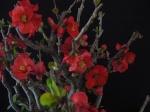
MichaelS- Member
 Re: American Bonsai at the NC Arboretum
Re: American Bonsai at the NC Arboretum
[quote="Richard S"]
Richard, I would argue that the tree (is both subject and medium) If the tree is all we have to manipulate then of course it is the medium but with the tree being an integral part of a natural scene we are attempting to convey it also must be considered the subject. Therin lies the difference between say painting (where the subject can be a natural scene or a tree and the paint and canvas the media) and bonsai.
I don't think anyone is really saying that. (certainly not me) In fact I don't even like the word ''style'' as it brings up pre-concieved ideas. What I'm saying is that what others have been calling the ''new'' ''naturalistic style'' (their term not mine but I use it for the sake of argument) is nothing more than an attempt or concept to produce a natural looking work AND that many of these works fall short of their claims. That the said works are to use your word not ''objectively better'' than what has already come before.
No because the rule books are simplified for those just beginning. However the informal broom appears abundently in the Japanese albums and shows. So what's new?
Anyway, it seems to me that the ultimate objective of all art is to express something of the emotional relationship between the artist and their subject. But what, in bonsai terms, is the subject?
The obvious and intuitive answer of course is trees, which to some extent I suppose must be true but I think that for most of us it goes a little deeper than that.
I would argue that the tree is in fact the medium not the subject! The subject is in fact nature or perhaps even man's relationship with nature. Of course as a subject for art this is not new, original or in any way exclusive to bonsai but I digress.
Richard, I would argue that the tree (is both subject and medium) If the tree is all we have to manipulate then of course it is the medium but with the tree being an integral part of a natural scene we are attempting to convey it also must be considered the subject. Therin lies the difference between say painting (where the subject can be a natural scene or a tree and the paint and canvas the media) and bonsai.
This doesn't mean that all works are equal, some are still objectively "better" than others but simply that the worth or value of a piece can't in anyway be determined solely by it's form or style. To say that one form or style is good and another bad or that one is right and another wrong is therefore nonsense!
I don't think anyone is really saying that. (certainly not me) In fact I don't even like the word ''style'' as it brings up pre-concieved ideas. What I'm saying is that what others have been calling the ''new'' ''naturalistic style'' (their term not mine but I use it for the sake of argument) is nothing more than an attempt or concept to produce a natural looking work AND that many of these works fall short of their claims. That the said works are to use your word not ''objectively better'' than what has already come before.
as Walter has often pointed out, the most common natural tree style, the informal broom doesn't appear in the Japanese bonsai rule book.
No because the rule books are simplified for those just beginning. However the informal broom appears abundently in the Japanese albums and shows. So what's new?

MichaelS- Member
 Re: American Bonsai at the NC Arboretum
Re: American Bonsai at the NC Arboretum
Hi MichealS,
I have to politely asking you to retire this debate in respect for Mr. Joura's original intention of this thread, and that is the bonsai at N.C. arboretum. You can create another thread for this debate to continue, if other people would like to continue this seemingly endless conversation, about what is natural and what is bonsai. Respectfully yours.
van
By the way, Mr. Pall also posted the responses to Mr. Joura's open letters on his personal blog. I wonder if anyone can evoke the conversation with him directly there of the natural movements.
I have to politely asking you to retire this debate in respect for Mr. Joura's original intention of this thread, and that is the bonsai at N.C. arboretum. You can create another thread for this debate to continue, if other people would like to continue this seemingly endless conversation, about what is natural and what is bonsai. Respectfully yours.
van
By the way, Mr. Pall also posted the responses to Mr. Joura's open letters on his personal blog. I wonder if anyone can evoke the conversation with him directly there of the natural movements.
Last edited by Van on Mon Sep 07, 2015 7:35 pm; edited 1 time in total (Reason for editing : Mr. Pall's blog.)
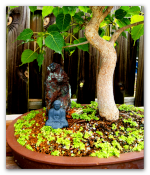
Van- Member
 Re: American Bonsai at the NC Arboretum
Re: American Bonsai at the NC Arboretum
Actually, Arthur has requested that we, the Moderators, DO NOT remove anything from the thread for the reasons he has already given on the thread.

fiona- Member
 Re: American Bonsai at the NC Arboretum
Re: American Bonsai at the NC Arboretum
fiona wrote:Actually, Arthur has requested that we, the Moderators, DO NOT remove anything from the thread for the reasons he has already given on the thread.
Arthur, You're awesome!!!!

Sam Ogranaja- Member
 Re: American Bonsai at the NC Arboretum
Re: American Bonsai at the NC Arboretum
Van wrote:Hi MichealS,
I have to politely asking you to retire this debate in respect for Mr. Joura's original intention of this thread, and that is the bonsai at N.C. arboretum. You can create another thread for this debate to continue, if other people would like to continue this seemingly endless conversation, about what is natural and what is bonsai.
as mikey pointed out, there is this thread:
https://ibonsaiclub.forumotion.com/t16671-don-t-make-a-tree-looked-like-a-bonsai-but-make-a-bonsai-looked-like-a-tree-revisit
virtually the same debate, with equally disparate positions, but with less aggression and far more palatable...
HEY SAM !
was wondering where you gone off to...

Kevin S - Wisco Bonsai- Member
 Re: American Bonsai at the NC Arboretum
Re: American Bonsai at the NC Arboretum
Fiona beat me to it.
Just be polite -- as you are being.
And thanks.
Just be polite -- as you are being.
And thanks.

JimLewis- Member
 Re: American Bonsai at the NC Arboretum
Re: American Bonsai at the NC Arboretum
beer city snake wrote:Van wrote:Hi MichealS,
I have to politely asking you to retire this debate in respect for Mr. Joura's original intention of this thread, and that is the bonsai at N.C. arboretum. You can create another thread for this debate to continue, if other people would like to continue this seemingly endless conversation, about what is natural and what is bonsai.
as mikey pointed out, there is this thread:
https://ibonsaiclub.forumotion.com/t16671-don-t-make-a-tree-looked-like-a-bonsai-but-make-a-bonsai-looked-like-a-tree-revisit
virtually the same debate, with equally disparate positions, but with less aggression and far more palatable...
HEY SAM !
was wondering where you gone off to...
Brother Kev. Personally, I can't get involved in these conversations. It's been entertaining but I'm pretty sure this is how wars start. You know what I mean? They're wrong, I'm right and if anyone has read a history book you know the rest.
But the fact that Arthur has asked for these folks view points to remain is Awesome. I would hug him if I knew him better. Might hug him anyway. Walter too although I'm pretty sure Austrians don't hug Albanians

Sam Ogranaja- Member
 Re: American Bonsai at the NC Arboretum
Re: American Bonsai at the NC Arboretum
I'm pretty sure they do.Sam Ogranaja wrote: I'm pretty sure Austrians don't hug Albanians

Maros Belan- Member
 Re: American Bonsai at the NC Arboretum
Re: American Bonsai at the NC Arboretum
Maros Belan wrote:I'm pretty sure they do.Sam Ogranaja wrote: I'm pretty sure Austrians don't hug Albanians
hhaahhahaahhahahaahahahaahhahaah

Sam Ogranaja- Member
 Re: American Bonsai at the NC Arboretum
Re: American Bonsai at the NC Arboretum
good to see you having some fun with this, Arthur !
and not just the placards, but also the request to NOT have comments removed...
(which surprises me not at all )
)
and sam - i think handshakes and hugs were invented as border breaking bridges
and not just the placards, but also the request to NOT have comments removed...
(which surprises me not at all
and sam - i think handshakes and hugs were invented as border breaking bridges

Kevin S - Wisco Bonsai- Member
 Re: American Bonsai at the NC Arboretum
Re: American Bonsai at the NC Arboretum
Walter Pall wrote:Dear Arthur,Arthur Joura wrote:
"Naturalistic bonsai compared to what generally is known as bonsai is like the difference between realistic and abstract painting. Naturalists try to create something that looks like a genuine tree. General bonsaiists try to create something that looks like a bonsai. And they are not aware of it."
It is curious to me that this statement of yours has provoked no response from the people who have previously voiced their opinion of naturalistic bonsai as a dubious concept if not an outright fraud. Perhaps they are simply content to let your point of view stand unchallenged next to theirs in the marketplace of ideas, or maybe they are afraid of crossing you on a public forum. (Who dares step into the ring with Walter Pall - The Munich Masher, The Austrian Annihilator, The Tyrolean Terror!) I have noticed, Walter, that the bonsai community seems to divide itself into 2 camps regarding you. Some love you and the rest fear you. Machiavelli would be proud.
...
I have a response to your statement, Walter. I want to know why. Why are so many people in bonsai seemingly not aware that their bonsai creations do not look like genuine trees?
I think they don't question what they are doing. They are doing it as a craft. While nowadays most will agree that bonsai is an art form they don't practice it like one. (btw, fifteen years ago many if not the majority were of the opinion that bonsai was NOT an art form). So what is the difference? In a nutshell the craftsman has learned what he is doing and just does it. He does not question it, it's not his job to innovate, but to produce. The artist questions what he does, he questions everything. If something was not done before that's a good reason to do it. This is the western understanding of art by and large. The eastern art concept is more as we see craft. So this is one of the keys to understand the present bonsai scene: bonsai is seen and practiced as an Asian, namely a Japanese art form. And that means that it is practiced as a craft in western understanding. We praise an artist as a rebel, who rocks the boat. In Japan a rebel is a bad person, who rocks the boat. And that is not done. So it is not questioned what we produce as long as it looks like a good bonsai. And a good bonsai looks like a tree - everybody knows this. Or does it?Arthur Joura wrote:Let me offer this: Do you think many other people in bonsai recognize the difference between conventionally designed bonsai trees and real trees in nature? Your definition quote suggests you think they do not, but perhaps they do and they do not care. Why should they? If indeed they do not recognize the difference then why do you suppose they do not? Is it not obvious? I hope you will humor me Walter and share your thoughts. I think these questions are useful keys to unlocking the box so many people have built around bonsai as we know it today in the Western culture.
Arthur, you make me wary. Let me tell you a story around this.
In February of 2002 I went skiing and had a small camera with me. I made a couple of shots of the mountains and trees at the timberline. At this time it was quite something to be able to make good photographs with such a small camera which would not bother you while skiing. I was quite active on the Internet Bonsai Club Forum and showed these photographs. I showed this particular larch and asked what folks though about it. While today I neither think it was a great photograph nor that the larch was great in particular, at that time folks said it was a great tree, a nice tree, a good shot - no disagreement. So then I asked: 'can we not take this larch as an example to style our trees?'. Only a few thought that it could be worth a try. The majority said no. One in particular, Rainer Goebel, was absolutely against it. Rainer at that time was the big man on the forum, he had the last word and he knew it. But it would not have been me if I had not insisted that we should look for new ways and this would be one to consider. Rainer answered along the lines: 'Walter, I know you are not stupid, but you sound very stupid in your stubbornness. You insist that this should be an example for bonsai. It must not be and cannot be. Because it does not look like a bonsai.
BECAUSE IT DOES NOT LOOK LIKE A BONSAI. What a monstrous statement! I was tempted to answer right away, but fortunately did not. I went skiing instead. On the lift I thought a lot about this. How could it be that a reasonable person in general who has seen a university from inside would say this? How was it possible that practically everybody felt that the tree was great - and most could not see it as example for bonsai? It's like having a good looking lady sitting on a chair in front of you and everybody agrees that she is good looking. I ask 'can we not paint her?' and the answer is 'You cannot paint her, she does not look like a painting'. You would be offered treatment for such a statement.
While I was aggravated and irritated I came to the conclusion that it was not the intention of Rainer to make me mad, while he did. The answer was: he sincerely believed that this was the truth. And I came to realize that he was not the only one to think that way. It was normal to think so - it was what we were lead to believe the art of bonsai is all about: It is about creating a beautiful bonsai. Period. And it was my task to question that and find a way to create something that looked like this larch and not like a bonsai. While I had done this already for a couple of years At this point my thinking became clear about it.
So this larch as silly as it may be marked a great turning point in my thinking and possibly later on in the thinking of by now quite a few people.
This pathetic larch is like the urinal of Duchamp I would dare to say if this statement were not megalomania.
So I am aware that I am tuning in a circle here. You are correct Arthur, folks do realize that their bonsai don't look like real trees and they don't question this, they don't care. For them it is as it is supposed to be. This is what makes my ideas so irritating - they feel disturbed in their cozy world. And at the same time many think that their bonsai obviously look like real trees. They have gotten so used to the caricatures of real trees that they mistake them for the real thing.
This is like at the turning point of classical painting vs. impressionist around 140 years ago. Mainstream was clearly classical 'realistic' painting. The proponents of the classical way were absolutely under the impression that they were producing or looking at what the world really looked like. Then came the Impressionists and showed them what realism really was. They painted in sketches, mostly outside instead of inside with real colors ass they saw them. These paintings were so strange in the beginning for the proponents of the old 'right' way that they seriously thought that Impressionists were suffering from eye disease if not from some sort of mental disorder. In hindsight the Impressionists really at least tried to show the world as it is while the classical ones tried to show the world the way it should be and like it was always shown, like they wre taught to see it.
So to answer this question, Arthur, I believe in bonsai today we are at the turning point still at which the painting world was around 140 years ago. You are 'officially' trained in this, I am only a dilettante student who once thought about studying this 'officially'. So you be the judge whether it is so. The classical school believes that they are showing the trees like they are while they only show them in a mostly stereotype way as they THINK they are, as they were taught to see them. And the new wave shows the trees as they really are and still meet a lot of opposition for their blasphemy. Traditional bonsaiists think that they make trees to look like trees while they make them to look like bonsai.
So it is still not clear what the bonsai crowd thinks about this issue. Whenever I mention something like 'the overwhelming majority of bonsai don't look like trees but like bonsai' I get the impression that I am not understood. Most really don't see it. They really think I am speaking nonsense. Well, maybe I am. But they don't smell their own scent. So I insist: `General bonsaiists try to create something that looks like a bonsai. And they are not aware of it'.
Anyway, it is very important at this point to repeat that it is not necessary to like the naturalistic way. You can hate it, that's OK. But one should respect it and not resort to personal attacks against the proponents. And it is also important to note that this is not an either-or situation. One can well do several styles and be an integer artist. Also one can enjoy many styles and be an integer bonsai connoisseur. And one can like a person while being radically against his ideas. Yes, it is OK to like Naturalists and not like their work.
Thank you Walter for these explanations. In Asia, more and more bonsai people practicing naturalistic design for the art. and we use our natural environment for inspiration both for regular "bonsai" in a pot and for Landscape/forest or penjing bonsai. And it is not that easy to make, unlike templated bonsai designs. We need to focus on the ramification and branch trunk ratio/proportion, for this we need more time to create convincing bonsai, and we do not hide our works under the thick foliage. Bonsai should look good both with leaves and without leaves. this way the maturity of the bonsai can be revealed.
kimo- Member
 Re: American Bonsai at the NC Arboretum
Re: American Bonsai at the NC Arboretum
[quote="kimo"]
kimo, I'm not sure I understand this. When you say Asia, do you mean other than Japan?
For many bonsai people, it has always been so
By ''template'' I assume you mean the ''Classical Pine tree'' style which was developed centuries ago and later transfered to deciduous trees. (and which everybody copied) That does not make the more natural approach new.
Exactly. But this has been going on ''forever''. There are hundreds of examples of trees (some approaching 1.5 centuries - not collected trees) which have been always been trained this way.
It's not a new way of thinking. It's only new for some people
I agree completely!
In Asia, more and more bonsai people practicing naturalistic design for the art.
kimo, I'm not sure I understand this. When you say Asia, do you mean other than Japan?
and we use our natural environment for inspiration both for regular "bonsai" in a pot and for Landscape/forest or penjing bonsai.
For many bonsai people, it has always been so
unlike templated bonsai designs.
By ''template'' I assume you mean the ''Classical Pine tree'' style which was developed centuries ago and later transfered to deciduous trees. (and which everybody copied) That does not make the more natural approach new.
And it is not so easy to make. We need to focus on the ramification and branch trunk ratio/proportion, for this we need more time to create convincing bonsai, and we do not hide our works under the thick foliage.
Exactly. But this has been going on ''forever''. There are hundreds of examples of trees (some approaching 1.5 centuries - not collected trees) which have been always been trained this way.
It's not a new way of thinking. It's only new for some people
Bonsai should look good both with leaves and without leaves. this way the maturity of the bonsai can be revealed.
I agree completely!

MichaelS- Member
 Re: American Bonsai at the NC Arboretum
Re: American Bonsai at the NC Arboretum
Thanks so much for posting these great masterpieces kumo. I love them but they are not naturalistic except for the white pine group and the elm group. The figs are close too.
They are however not ''boring'' but a real pleasure to look at. (which is the No1 priority in bonsai) don't you think?
They are however not ''boring'' but a real pleasure to look at. (which is the No1 priority in bonsai) don't you think?
Last edited by Chris Cochrane on Thu Sep 17, 2015 9:39 pm; edited 1 time in total (Reason for editing : removed re-posting of kumo's lengthy post)

MichaelS- Member
 Re: American Bonsai at the NC Arboretum
Re: American Bonsai at the NC Arboretum
yes they are all naturalistic. "Naturalistic" is defined as "looking like what appears in nature"-. The designs are all natural and represents what huge and mature tropical/deciduous trees look like. 1,2,3 back branching were not followed which might results in a pine like branching structures. like this tree
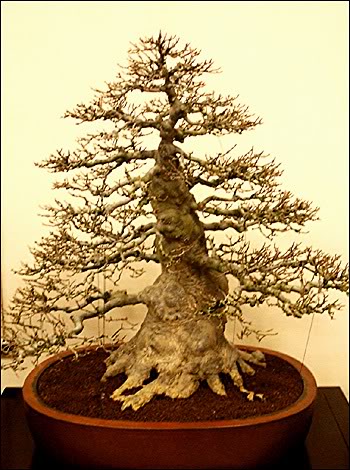
(image is from public domain and not copyrighted)
kimo

(image is from public domain and not copyrighted)
kimo
kimo- Member
 Re: American Bonsai at the NC Arboretum
Re: American Bonsai at the NC Arboretum
there is no elm neither figs in the pictures too.
BTW. how do bonsai people define "Naturalistic" other than what was defined in the dictionary. just curious.
In Japan there were "traditional" bonsai designs that were also "Naturalistic", a lot those naturalistic masterpieces were displayed many times in prestigious exhibitions like Kukofuten. I hope the admin will not reprimand me if I post those images of Japanese "naturalistic" bonsai masterpieces.
BTW. how do bonsai people define "Naturalistic" other than what was defined in the dictionary. just curious.
In Japan there were "traditional" bonsai designs that were also "Naturalistic", a lot those naturalistic masterpieces were displayed many times in prestigious exhibitions like Kukofuten. I hope the admin will not reprimand me if I post those images of Japanese "naturalistic" bonsai masterpieces.
kimo- Member
Page 22 of 40 •  1 ... 12 ... 21, 22, 23 ... 31 ... 40
1 ... 12 ... 21, 22, 23 ... 31 ... 40 
 Similar topics
Similar topics» American Bonsai at the NC Arboretum
» WISTERIA BONSAI AT INTERNATIONAL BONSAI ARBORETUM
» Ashville arboretum bonsai
» Carolina Bonsai Expo @ NC Arboretum
» Autumn at the NC Arboretum bonsai garden
» WISTERIA BONSAI AT INTERNATIONAL BONSAI ARBORETUM
» Ashville arboretum bonsai
» Carolina Bonsai Expo @ NC Arboretum
» Autumn at the NC Arboretum bonsai garden
Page 22 of 40
Permissions in this forum:
You cannot reply to topics in this forum








